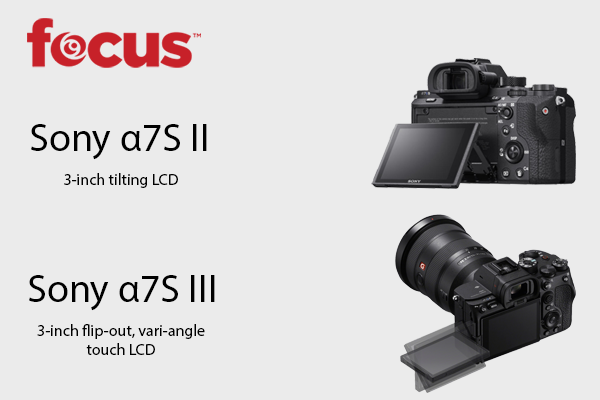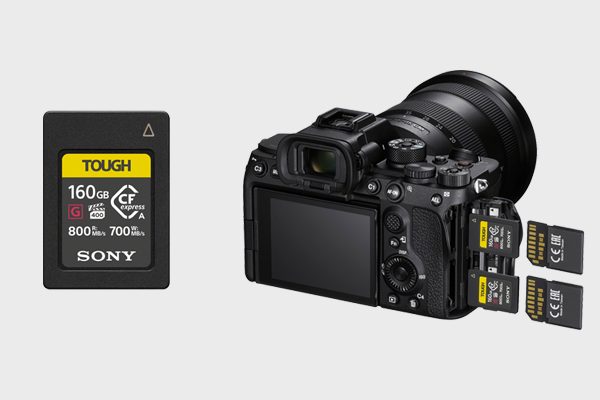When comparing the Sony a7S II vs Sony a7S III, one thing is clear: the a7S III is worthy of all the hype.
The Sony a7S II is a great camera, and has been consistently popular since its release in late 2015. So naturally when a successor was announced this year – the Sony a7S III – it generated a lot of excitement. But exactly how much of an upgrade is the Sony a7S III?
We compared the two cameras to find out.
Overall, Sony has improved the performance capabilities to produce a more powerful camera. Like its predecessor, the a7S III is a great full-frame hybrid, capable of shooting 4K video and performing well in low light. However, multiple upgrades across the board have resulted in a superior camera.

What’s New or Improved in the Sony a7S III
There are several notable differences between the Sony a7S II vs Sony a7S III. While both cameras are accurately marketed as hybrids, the improvements that have been made certainly seem to cater to video content creators.
Sensor
The a7S III’s new Exmor R sensor has a readout speed twice as fast as the a7S II, as well as a significantly improved rolling shutter. The rolling shutter on the a7S II could be particularly frustrating, so this is a wise improvement by Sony.
While the resolution is effectively the same at 12.1MP, the new back-illuminated sensor has increased the size of each pixel, enabling a stellar low-light performance. This resolution may still be too low for some still photographers, but it lends itself well to 4K video recording. Higher resolution cameras often have to use pixel binning (combining pixels to reduce resolution) to shoot 4K. Impressively, the A7S III can internally record 4K 120p 10-bit 4:2:2 video with full pixel readout.
Additionally, the A7S III is the first camera in the Alpha series to offer 16-bit RAW output via HDMI output to an Atomos Ninja V external recorder. The camera also has a standard-size (Type A) HDMI port rather than a micro HDMI port like the a7S II.
Design
The A7S III is a slightly bigger camera, but the design changes that have been made are definitely worth it. Firstly, the A7S III has a flip-out, rotatable LCD screen. This is a great update for content creators that like to see the display when they’re both in-front, and behind the camera. The LCD is also a touch screen, allowing for easier image zooming and menu navigation.
Another new feature is the new heat dissipation system that enables the camera to record for longer without overheating. The a7S III can remarkably handle continuously recording 4K 60p 10-bit 4:2:2 video for up to an hour.
Other design improvements include a bigger, better-positioned record button on top of the camera, a more ergonomic grip, and a more powerful electronic viewfinder.
Autofocus
The Sony a7S III uses a hybrid autofocus system, with 759-point phase-detection and 425-point contrast-detection working in conjunction to provide a faster, more accurate autofocus. As a result, the new autofocus works exceptionally well, even in low-light or while recording 4K 120p video.
The a7S III is also the first camera in the S series to include real-time tracking, an intelligent autofocus feature that allows you to lock the focus on a moving subject. The new LCD screen allows you to simply touch the screen to indicate your subject, and the feature will automatically track them and keep them in focus. As an added nice touch, this feature can be used even when you’re shooting manually.
Battery
The a7S III uses a NP-FZ100 battery, the same battery as the Sony a7R IV, which has increased the life from the A7S II’s 310/370 (viewfinder/LCD) shots per charge to 510/600 shots per charge.
Memory

While the a7S II has a single memory slot for UHS-1 SD cards, the a7S III has two slots, both of which support UHS-I and UHS-II SD cards, as well as CFexpress Type A cards.
CFexpress cards read and write much faster than SD cards, and are strongly recommended if you’re planning to shoot 4K video. SD cards won’t actually be able to handle 4K 120p video recording. However if you are planning to shoot on a CFexpress type A card, you’ll also likely need to invest in a card reader.
Specs: Sony a7S II Vs Sony a7S III
| Sony a7S II | Sony a7S III | |
|---|---|---|
| Sensor | Full Frame 12.2MP Exmor CMOS Sensor | Full Frame 12.1MP Exmor R CMOS Sensor |
| Image Processor | BIONZ X | BIONZ XR |
| Video Recording | 4:2:2 Full HD or 4K QFHD with XAVC S Format | 4K 120p 4:2:2 10-bit |
| ISO | Still images: ISO 100-102400 (expandable to ISO 50-409600), AUTO (ISO 100-12800, selectable lower limit and upper limit), Movies: ISO 100-102400 equivalent (expandable to ISO 100-409600 equivalent), AUTO (ISO 100-12800 equivalent, selectable lower limit and upper limit) | Still images: ISO 80–102400 (ISO numbers up from ISO 40 to ISO 409600 can be set as expanded ISO range.), Movies: ISO 80–102400 equivalent (ISO numbers up to ISO 409600 can be set as expanded ISO range.) |
| Autofocus | 169-Point Contrast-Detection | Hybrid AF With 425-Point Contrast-Detection and 759-Point Phase-Detection |
| 5-Axis Image Stabilization | Yes | Yes |
| HDMI Port | Micro HDMI (Type D) | Standard HDMI (Type A) |
| Memory Slots | 1 | 2 |
| Memory Type | Multi slot for Memory Stick Duo™/ SD memory card | Multi slot for SD (UHS-I/II compliant) memory card / CFexpress Type A card |
| Viewfinder | 2.4M-Dot, 0.5-Inch XGA OLED Electronic Viewfinder | 9.44M-Dot, 0.64-Inch Quad-XGA OLED Electronic Viewfinder |
| LCD | 3-Inch Tilt Screen | 3-Inch Flip-Out, Vari-Angle Touch Screen |
| Battery Life | Approx. 310 shots (viewfinder) / 370 shots (LCD screen) (CIPA standard) | Approx. 510 shots (Viewfinder) / 600 shots (LCD monitor) (CIPA standard) |
| Dimensions (W x H x D) | 4.69 x 2.74 x 1.50 inches | 5 1/8 x 3 7/8 x 3 1/4 inches |
| Weight (Body Only) | Approx. 1 lb 4.6 oz (584 g) | Approx. 1 lb 5.7 oz (614 g) |
Why Pick or Stick With the Sony a7S II
If you already own a Sony a7S II, it may not make sense to upgrade yet. Sony hasn’t reinvented the wheel, the a7S III is definitely a more powerful camera; if you’re shooting a lot of video it’s worth upgrading. However, there are some reasons why you may pick or stick with the a7S II.
Resolution
The sensor resolution on the a7S III is still the same at roughly 12MP. If you’re planning to upgrade to a higher resolution camera next, you may want to consider the Sony a7 III or a7r IV instead.
Price
With the release of the a7S III, Sony has officially discontinued the a7S II. As a result, the clearance price is remarkably low at just $1,998.00. While the a7S III may be an upgrade, the a7S II is still a very powerful camera with many of the same capabilities. It’s a great choice for a photographer or content creator on a tight budget. That is, if you can still get your hands on one.
Verdict
The Sony a7S III is a superior camera to the Sony a7S II, especially when it comes to video. While both cameras offer a superb low-light performance and impressive 4K video recording, a more powerful sensor and multiple other upgrades have made the Sony a7s III a very attractive release.











